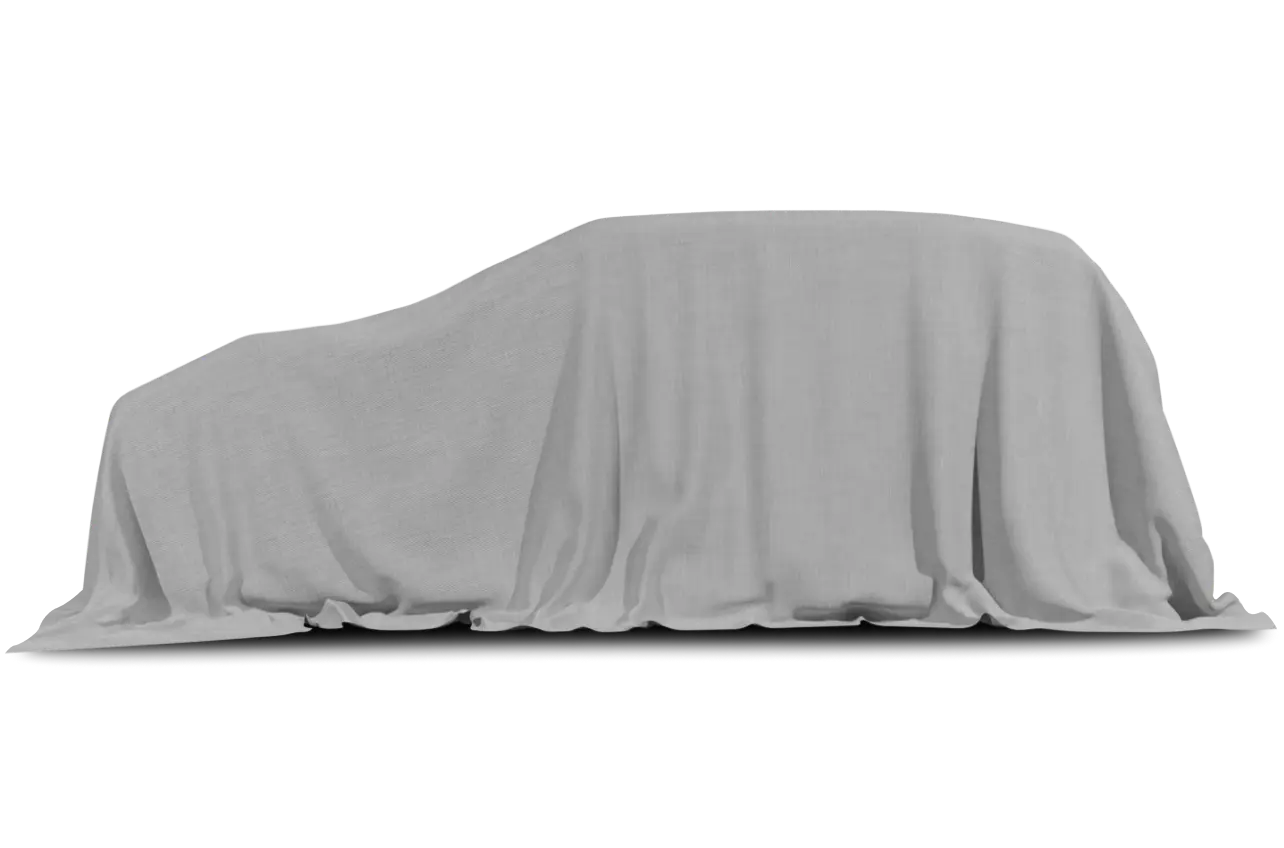
After driving the 2010 Aston Martin DBS Volante, my initial impression as a car reviewer was that I’d been overusing the word “stunning.” Some cars look good — even great. The Jaguar XK, in particular, has many fans and is often mistaken for an Aston. But when you have the real thing, you know it. Everybody knows it, and everyone seems to love it. We often speak of polarizing designs — ones some people love and others hate. The DBS is as non polarizing as the Pontiac Aztek — just in the other direction.
The DBS is about more than looks and exclusivity, though, as you know from the second you hit the accelerator. As a Volante, or convertible, the car starts at $283,900, and our test car was $297,240 as equipped. Is it worth that much? If you’re asking the question, I’d guess no, but if everyone felt that way, the DBS wouldn’t exist, would it?
Exterior & Styling
You don’t see cars like the DBS every day, but if it looks familiar, it might be because you’ve seen the coupe version’s debut — along with Daniel Craig as James Bond — in the 2006 film “Casino Royale.” It was on-screen very little, and on-road even less. Mere seconds into what seemed an impending chase scene, our hero swerved to avoid hitting a Vespa (or perhaps a woman named Vesper) and rolled the thing 007 times. Nice job, Bond. You had to switch off the stability system, didn’t you…
Lesser luxury classes are migrating toward retractable-hardtop convertibles, but most automakers devoted to low weight and usable trunk space are sticking to the soft-top. The Volante characteristically lacks the DBS coupe’s fastback roofline, but it’s reasonably true to the overall design. The car’s hood, trunk and front fenders are made of carbon fiber, as are the chin spoiler and rear diffuser, where the material’s distinctive weave is visible.
The chin spoiler, also known as a splitter, rides very close to the ground, at the mercy of curbs and parking blocks. I issued the same caution about Chevrolet’s Corvette ZR-1, but thankfully the Aston’s splitter doesn’t jut out as far in the center. On the downside, the car’s front sonar parking sensors sit midway up the bumper, where they don’t always detect low obstacles.
I wasn’t wild about our car’s Amethyst Red paint or the lighter roof color, but for the full British effect, Aston Martin was kind enough to provide us with London-style rain and fog, in which I think the car looked better (see the photos).
Behind the Wheel
The doors, which have what you might call a mild butterfly design, rise slightly as they open so you needn’t worry about striking a curb — though parking this doll on the street doesn’t strike me as a very good idea. With the opening of the door comes a whiff of sumptuous leather that beckons you inside. Step delicately over a side sill bearing a placard that reminds you the DBS is “Hand built in England,” and you drop into supportive, well-bolstered seats with integral head restraints that aren’t adjustable, yet were perfectly positioned for me.
It all starts with a crystal-capped key fob that Aston calls the Emotion Control Unit. How silly, I thought. Then I pushed it into the mid-dashboard slot. The receptacle glowed white, then red as the engine thundered to life. I have to admit I had an emotional reaction.
The drivetrain comprises a 6.0-liter V-12 that drives the rear wheels through your choice of a six-speed manual or automatic transmission. These are two big positives for me. Whether you like stick shifts as much as I do or not, you must acknowledge the advantage of choice. (Unfortunately, I had no choice and got the automatic.) Bentley and Lamborghini offer only paddle-shiftable automatics — with the exception of Lamborghini’s new limited-production version of the Gallardo, named after test driver Valentino Balboni. Likewise, the Balboni is Lambo’s only car with rear-wheel drive. All its other models — as well as the closest competitor from Bentley, the Continental — are all-wheel drive.
There’s a lot to be said for the performance of all-wheel drive, but purists still prefer the control that rear-drive provides over a car’s attitude, and the feel of steering unencumbered by extra hardware up front. That’s what the DBS delivers, with balanced weight distribution and good steering feedback. Not so the Continental GTC Speed I reviewed, which feels nose-heavy and more isolated from the road. Strictly by the numbers, the 600 horsepower and 553 pounds-feet of torque from the GTC Speed’s twin-turbo W-12 looks superior to the DBS V-12’s 510 hp and 420 pounds-feet of torque. However, the Bentley weighs close to 5,500 pounds, and the DBS Volante tops out at 4,070 pounds with the automatic transmission. The difference is clear in the cars’ handling. Their zero-to-60 mph sprints are about equal at roughly 4.5 seconds.
Out on the street, there’s nothing wrong with the DBS. When turning from a dead stop at an intersection, it’s very easy to break the tires loose and trigger the traction control — something you don’t experience with all-wheel drive. Honestly, more low-rev torque might be a bad thing in this regard.
The DBS sounds terrific, especially when you exceed 4,000 rpm, which opens valves in the exhaust stream and lets the V-12 roar. If you stay in low gears and rely on engine braking, you hear the engine from the front, thanks in large part to four cooling vents in the hood. Heat rises from the vents, distorting your view when sitting at a stoplight, waiting anxiously to wind it out again.
If you keep the drivetrain in Drive rather than Sport mode and leave the adaptive suspension in its default setting, the DBS is pretty quiet and comfortable — enough for long drives on a smooth highway. One exception common to soft-tops is that noise creeps in around the rear window, particularly the high-pitched “shhhhhhhhh” of passing tires on wet pavement. Like most convertibles, the Volante doesn’t feel as rigid as a coupe, but it’s more than reasonable, especially in normal driving.
The Inside
The interior is beautifully executed, but there are some shortcomings: The multimedia controller is perplexing, even once you delve into the owner’s manual, and “cupholders” is a generous name for the two spaces in the center console. (I used to think Great Britain was a tragically dehydrated country, but I have since concluded that Brits have evolved to absorb the ever-present rainfall through their skin.)
As for the two rear seats, Aston Martin calls them “occasional,” but I assure you there is no occasion for which these can be considered seats. They’re handy for cargo, though, because the trunk is modest at 6.6 cubic feet in both the coupe and the Volante.
DBS Volante in the Market
I flat-out prefer the DBS Volante to the Continental GTC Speed, though one could argue the Speed’s $231,400 base price makes it an unfair fight. (GTC versus Aston Martin DB9 is a battle I’d eagerly wage another day.) That said, I have to give credit to Aston for standard features that were optional in the GTC Speed and swelled its as-tested price to $270,795. Such features include the DBS’ carbon-ceramic brakes and a premium stereo that sounds much better than the Bentley’s. The DBS’ satellite radio option is steep at $1,250, as are the $3,190 10-spoke wheels. Otherwise, our test car had some interior colour [sic] options priced in the hundreds. Bentley charged $1,000 for contrast stitching. We’re talking thread here. Thread!
With its peak torque coming at high revs (5,750 rpm), its lighter weight and its athleticism, the DBS is more in the league of Ferraris and Lamborghinis, though I think I’d give the Italian exotics the edge in terms of track performance. What the DBS has is an excellent mix of truly stunning design, performance and class — probably more than you’ll get anywhere else. I drive many cars, and sometimes I’m sorry to see them go back to their rightful owners. But this time? We’re talking full-on separation anxiety. I need a lotto ticket, a sugar mama or a therapist.
| Send Joe an email |












